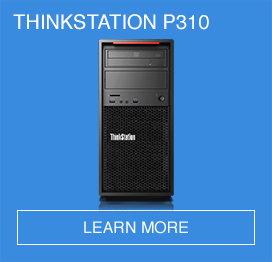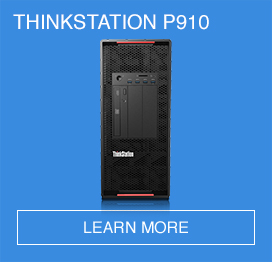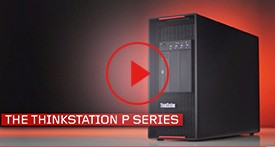It’s not about hardware – it’s about achieving your peak performance
Competitive businesses stay that way, partly by affording themselves a consistent technology advantage. But, the question is: what’s the most cost-effective way to sustain that advantage?
Workstation refresh cycle of up to three years can easily pay for itself in performance gains, improved reliability, and new levels of flexibility. Three years is the expected useful life of a typical workstation, especially in a growing business environment that consistently places new and more complex demands on its IT resources.
Here are five sensible reasons for instituting a three-year refresh cycle with Lenovo ThinkStation® workstations.
1. A workstation refresh can pay for itself
A new workstation, like a Lenovo ThinkStation P-Series can deliver up to 73% greater performance over a comparable three-year-old device.1 Beyond performance, the added reliability of an entry-level Intel® Xeon® processor-based workstation can deliver significant savings in the form of reduced downtime and fewer costly onsite repairs. Together, improved performance and reliability add up to an investment worth making.
2. A refresh provides the flexibility to fine-tune capabilities.
As businesses evolve, so do their workstation requirements: the entry-level model that handled tasks with ease three years ago might be lagging under vastly increased workloads and more complex demands. A scheduled refresh cycle enables businesses to anticipate future needs – not react after systems are already overstressed.
3. A refresh keeps star producers at peak productivity
If businesses invest in standout engineering or design talent, it makes sense to provide those high-value users with workstations that enable them to perform at full potential. And it reduces employee frustration with aging workstations that may be holding them back.
4. A refresh is preferable to half-measures that may not deliver.
It might be tempting to defer a workstation refresh in favor of additional memory, an upgraded graphics card or other improvements to existing systems. But, doing so deprives users of important performance gains made possible by the latest Intel Xeon processors
5. In the end, it’s all about the ROI
Ultimately, the case for adopting a three-year refresh cycle, like any other acquisition, comes down to one determination: can it deliver a LENOVO THINKSTATION® P SERIES compelling return on investment?
For example, a new workstation that can triple performance might speed products to market sooner than the competition, providing an important first-mover advantage. Or, a new workstation that reduces the need for physical prototypes by half could make a significant impact on the speed and cost of the product design cycle.
Consider this: A Lenovo ThinkStation workstations render CAD and handle complex 3D designs almost twice as fast as comparable 3 year old systems.2

That means CAD professionals can nearly double their productivity, accruing more billable hours in half the time it used to take for projects to render. These are just few possible scenarios that can come from refreshing your engineering resources with new Lenovo workstations on a sensible three-year cycle.
Businesses that live or die on the speed and capacity of their technology tools are already preserving their advantage profitably with a prudent workstation refresh cycle; shouldn’t you keep up, too?

















